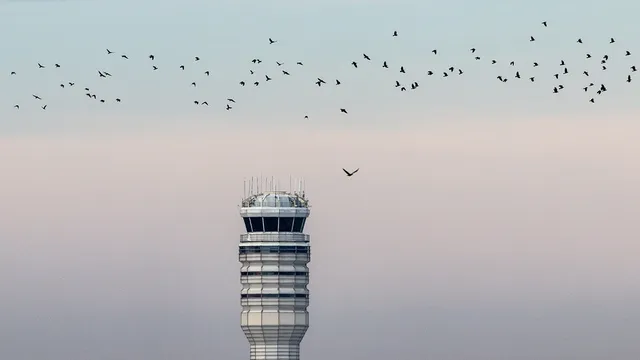
FAA employee charged with assault after violent altercation in control tower
2025-04-03 09:30- A violent altercation took place at Ronald Reagan Washington National Airport on March 27, 2025.
- FAA employee Damon Marsalis Gaines was charged with assault and battery after a fight in the control tower.
- This incident is part of ongoing concerns regarding the mental well-being and safety of air traffic controllers.
Express your sentiment!
Insights
On March 27, 2025, a severe workplace altercation occurred in the air traffic control tower at Ronald Reagan Washington National Airport (DCA) in the United States. Damon Marsalis Gaines, a 38-year-old Federal Aviation Administration (FAA) employee, has been charged with assault and battery following a 'bloody physical fight' with a colleague. The fight reportedly involved thrown punches and left one individual with injuries that drew blood. The incident highlights underlying tensions within the control tower, which may have been exacerbated by the aftereffects of a tragic midair collision that occurred earlier in the year, on January 29, 2025, where an American Airlines flight collided with a military helicopter, resulting in the deaths of all 67 individuals on board both aircraft. Sources have posited that the stress from that incident has contributed to an increasingly hostile work environment among air traffic controllers, where employees have been observed exhibiting aggressive behavior. Six or seven air traffic controllers and a supervisor usually staff the control tower, and the FAA has confirmed that they are investigating the cloud of tension surrounding the incident. Allegedly, the airport's staffing levels at critical times have not met normal operational standards, which has raised multiple safety concerns. As of now, Damon Marsalis Gaines is on administrative leave pending the outcome of the investigation. Both the FAA and the Metropolitan Washington Airports Authority have confirmed the details surrounding this altercation, which is under active investigation. There have been various recent incidents that have drawn media attention towards DCA's air traffic control operations, highlighting a troubling pattern that continues to unfold after the January midair collision and the implications it holds for the safety and well-being of air traffic personnel.
Contexts
Air traffic control (ATC) safety regulations are critical for ensuring the safe and efficient management of air traffic. These regulations encompass a vast array of guidelines and procedures that aim to minimize the risk of accidents and incidents in the airspace system. Established by various aviation authorities worldwide, these regulations are designed to govern ATC operations, the training and certification of air traffic controllers, and the use of technology in managing airspace. The primary goals of these regulations are to enhance situational awareness among controllers, maintain safe separation between aircraft, and facilitate effective communication between pilots and ATC staff. At the core of ATC safety regulations is the requirement for rigorous training and certification processes for air traffic controllers. Individuals in this profession must undergo extensive training programs that cover essential topics such as radar operations, meteorology, and human factors that influence decision-making during critical situations. Furthermore, controllers must complete simulations and participate in recurrent training to stay current with the latest procedures and technologies. Such comprehensive training helps to ensure that controllers can respond to emergencies and unexpected events with precision and clarity, thereby safeguarding the aircraft and passengers under their supervision. Technology plays a fundamental role in air traffic control and has significantly transformed the landscape of aviation safety. Regulatory bodies encourage the integration of advanced systems such as Automatic Dependent Surveillance–Broadcast (ADS-B), which allows for more accurate tracking of aircraft positions in real-time. The use of these technologies enables controllers to maintain a proactive stance in managing air traffic, reducing the likelihood of collisions and improving overall airspace efficiency. Additionally, regulations stipulate the implementation of data sharing between various aviation stakeholders, including airlines and air navigation service providers, which enhances coordination and minimizes the risk of errors that could compromise safety. Furthermore, regulatory oversight is essential in maintaining and continually assessing the effectiveness of ATC safety regulations. Authorities regularly conduct safety audits, incident investigations, and performance evaluations to identify areas for improvement and ensure compliance with established standards. Transparency in reporting and accountability within the system encourages a culture of safety, where continuous learning and improvement are prioritized. The aviation industry operates in a dynamic environment; therefore, regulations must adapt to emerging risks and the evolving technological landscape to remain effective. By embracing a proactive regulatory framework, air traffic control can uphold the highest safety standards, ultimately ensuring the protection of lives and the efficient functioning of air travel.